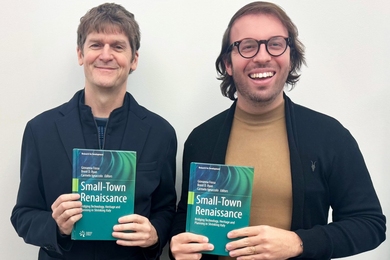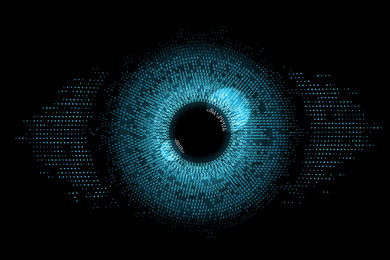A new educational program at the MIT Haystack Observatory will allow undergraduates from MIT and elsewhere to conduct hands-on astrophysics experiments by operating the observatory's 37-meter telescope over the Internet.
Haystack recently received an $800,000 grant from the NSF to develop the program.
"The new program is based on the premise that undergraduate science and engineering students nationwide need the opportunity to incorporate state-of-the-art research into their educational experiences," said Dr. Joseph E. Salah, director of Haystack. "The recent growth in Internet connectivity offered a new opportunity to realize this [for astrophysics] by allowing remote access to the Haystack telescope."
The program will start with pilot projects at MIT and local universities. The ultimate goal is national access to the radio telescope, which is one of the largest in the world.
The new program should also raise students' awareness of radio astronomy. "Most universities have a small optical telescope, but radio telescopes are not as common because they are more expensive," said Dr. Preethi Pratap of Haystack, who will be executing the new program.
"Radio telescopes look at radio emissions from space, and that tells you many different things about an object that you can't get from optical observing," Dr. Pratap said. For example, radio astronomers identified many molecules associated with the composition of comet Hale-Bopp that couldn't be seen with an optical telescope.
"Haystack staff will give students the educational background, support, and instrumentation necessary to pursue challenging and exciting experiments in radio astronomy," Dr. Salah said. "These experiments will allow students to utilize diverse concepts from physics, chemistry, mathematics, computer science and engineering, and learn to solve multidisciplinary problems."
Students from MIT and other local universities will initially travel to Haystack, which is 40 miles from MIT in Westford, to get hands-on training before using the telescope in a remote-controlled mode. To enable students from more distant locations to acquire this initial hands-on experience, Haystack researchers will develop a low-cost kit for a 3-meter radio telescope.
Based on a design by Dr. Alan Rogers, senior research scientist at Haystack, the 3-meter telescope "will be developed as a complement to Internet observations with the 37-meter telescope," Dr. Salah said. "Construction and operation of this small telescope will also provide students with valuable experience in microwave technology. It can also be used for introductory astronomical observations at undergraduate institutions."
The NSF grant will support the preparation of educational materials, tutorials and tools on the Web to provide students the necessary background in radio astronomy. Workshops will be held for both faculty and students, and telescope time will be allocated for educational research projects.
The program will be implemented using a phased approach, starting with pilot projects at MIT and local area universities which are part of the Northeast Radio Observatory Consortium, under whose auspices the radio astronomy research program is conducted at Haystack. In addition, special interactions will take place with the University of Massachusetts at Lowell, which is near Haystack, to test the approach at institutions which do not presently offer studies in astronomy. The program will then extend to regional colleges to further test and evaluate the developed materials and techniques prior to the ultimate goal of national access to the telescope.
Haystack has a history of involving undergraduate students in research. Over the last 10 years, it has sponsored summer internships, and the facility has been increasingly used by undergraduates at MIT, Harvard and Boston University to carry out observations as part of courses.
In January, MIT Professor Jacqueline N. Hewitt of physics held an Independent Activities Period course that reviewed the fundamentals of radio astronomy techniques. Students then conducted observations using the telescope and analyzed the results. Professor Charles C. Counselman of earth, atmospheric and planetary sciences plans to incorporate the telescope in his astronomy course.
For more information about the new program, contact Dr. Pratap at preethi@newton.haystack.edu>. Further information about Haystack and its research programs is available on the Web at http://www.haystack.edu/haystack>.
Funding for the new program has been provided jointly by the Division of Undergraduate Education, the Division of Astronomical Sciences and the Office of Multidisciplinary Activities at NSF.
A version of this article appeared in MIT Tech Talk on October 8, 1997.





